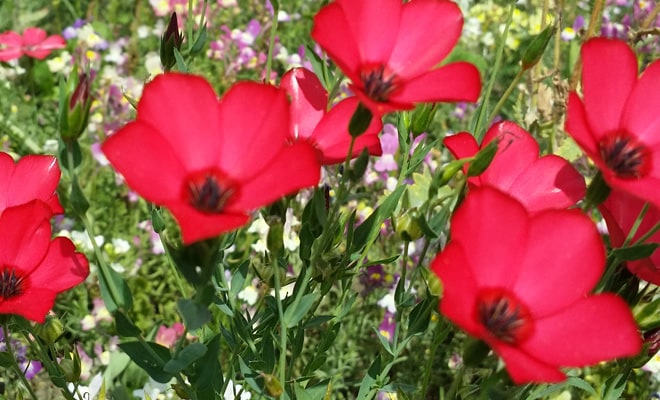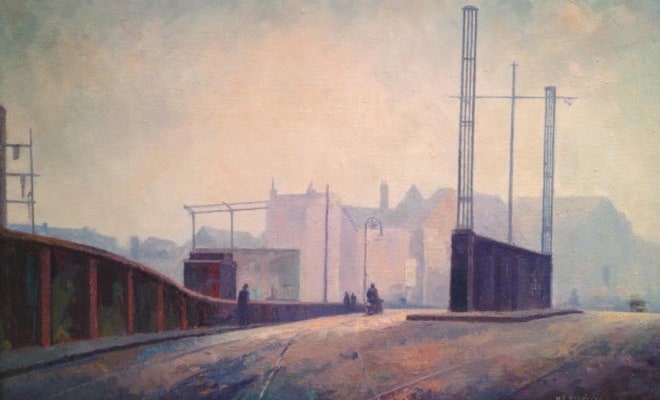Looking out of the window at Attic Self Storage HQ here in Wick Lane, I’m delighted to see that our wonderful wildflower garden has burst back into life. Blooming lovely!
Not only does it provide a welcome splash of colour right next to the snaking grey tarmac and drab concrete of the A12, it is a free food bank for some our favourite flying friends – the bees of Bow and beyond.
THE COCKNEY FLOWER SHOW
If a local worker bee could talk, here’s what she’d say:“Chelsea Flower Show? Give over love. Too far to fly, innit? But come darn my manor in E3 and my mates at Attic will sort you right out. Their gaff’s surrounded by enuff pollen and nectar for all the insects in the East End. Fill yer boots.”
Our wildflower seeds come from an organic supplier, and feature a variety of flowering months in the mix. So they should keep attracting visitors all summer long. Being eco friendly, we don’t use pesticides or herbicides or nasty neonicotinoids of any kind.
Other than cutting back at the end of the summer, we let Mother Nature do all the work. This creates a low maintenance garden with a low carbon footprint that’s highly pleasing to the eye. Especially if you happen to be a bee.
HOW DOES A BEE SEE?
Honey bees have amazing vision. No, they’re not running any FTSE 100 companies, but each bee has five eyes – two large compound eyes and three smaller ocelli eyes in the centre of its head.
100 years ago, Nobel Prize-winning scientist Karl von Frisch proved that bees can see colour. Flowering plants flash their brightly coloured petals in order to get pollinated. The colour helps bees target their nectar sweet spots that are visible only to insects, such as bees, that can see ultra-violet light.
Apparently bees can’t see the colour red, but they still seem to love our poppies. They can, however, see yellow, orange, green, blue, violet, and ‘bee’s purple’. This is a combination of yellow and ultraviolet light, invisible to us mere humans. According to the boffins, the most likely colours to attract bees are purple, violet and blue. Lucky we planted those lavender bushes.
BEELIEVE IT OR NOT
• The famous European honeybee Apis Mellifera is just one of over 270 species of bees in the UK.
• Only female bees can sting.
• Foraging honeybees perform a ‘waggle dance’ – a series of deliberate movements across the honeycomb – that conveys the direction and distance of a rich source of pollen and nectar.
• Bees can fly as far as five miles for food, but on average travel less than half a mile from the hive, using the position of the sun to navigate.
• Bees have a top speed of about 15-20mph.
• In the height of summer, there are an average of 35,000-40,000 bees in a hive. In the winter this drops to under 5,000.
• Other than honey, bees also produce royal jelly, beeswax and bee bread. This is a mixture of pollen and honey, which they mould into granules and store in their honeycombs.
• According to Friends of The Earth, the UK has lost 13 species of bee since 1900 and a further 35 are considered under threat of extinction.
WHERE WOULD WE BE WITHOUT BEES?
The contribution by bees to world economies is staggering. Researchers at the University of Reading calculated that bees contribute more to the UK economy each year than the Royal family generates in tourism. (Queen Bee beats Queen E). In the USA, it’s estimated that these tireless little workers are worth around 14.6 billion dollars in crop production.
To put it bluntly, without bees pollinating our fruit and vegetables nearly all the crops in the world would fail and humankind will starve to death.
HOW TO AVOID A STICKY END
In addition to our wildflower garden initiative Attic Self Storage is proud to support ‘Friends of The Honey Bee’, a charity run by the British Bee Keepers Association (BBKA). We donate £1 for every new customer that signs up with us so all our clients are helping to preserve the future of bees.
The future of the planet is a hot topic and it seems to be getting hotter. As a company, Attic is determined to do as much as we can to combat global warming, protect the environment and promote species diversity.
THERE IS NO PLANET B. But in Bow, at least, we do have a BEE PLAN.




